An Essential Guide to Home IV Services: What You Need to Know
Why Home IV Therapy is Changing Healthcare Delivery
Home IV therapy is revolutionizing how patients receive intravenous treatments by bringing hospital-quality care directly to your living room. This medical service allows patients to receive essential fluids, medications, and nutrients through an IV line in the comfort of their own homes.
Quick Answer for Home IV Services:
- Medical Home IV: Antibiotics, chemotherapy, nutrition therapy delivered by trained nurses
- Mobile Wellness IV: Hydration, vitamins, hangover relief brought to your location
- Who Provides: Licensed nurses, paramedics under physician supervision
- Cost: $199-$399 for wellness IVs; medical IVs often covered by insurance
- Safety: Low complication rates (under 5%) when proper protocols followed
- Areas Served: Most major cities including Denver, Colorado metro area
Home IV therapy serves two main categories. First, those with serious medical conditions requiring medically necessary treatments like long-term antibiotics or IV nutrition. These require physician referrals and are often covered by insurance. Second, healthy individuals seeking wellness-focused treatments for dehydration, fatigue, or recovery.
Research shows that up to 80% of patients requiring long-term IV antibiotics can be safely treated at home, with over 90% reporting improved quality of life compared to hospital stays. Most patients can return to work and normal activities while receiving treatment.
Medical home IV requires extensive training, sterile technique, and ongoing nurse supervision. Mobile wellness IV services, while popular, carry some debate about medical necessity and cost-effectiveness.
I'm Travis Sugg, founder of Biomed Mobile IV & Wellness, with over a decade of experience as a paramedic and licensed IV therapy provider serving the Denver metro area. My background in emergency medicine and home IV services has shown me how proper training and safety protocols make the difference between effective treatment and unnecessary risk.

Understanding Home IV Therapy
Home IV therapy brings hospital-quality intravenous treatments directly to your doorstep, delivering fluids, medications, and nutrients straight into your bloodstream through a small catheter placed in your vein. This intravenous route bypasses your digestive system entirely, ensuring 100% absorption and much faster therapeutic effects compared to oral medications.
When you take a vitamin orally, your body might only absorb 20-30% after going through your stomach and liver. With home IV therapy, every drop goes directly where your body needs it most, which is why people often feel results within minutes.
The type of IV access depends on treatment duration. For short-term therapies like hydration or vitamin infusions, we use peripheral IVs in your arm or hand. For longer courses, providers might recommend PICC lines or implanted ports for weeks or months of therapy.
Professional oversight makes all the difference in safe home IV delivery. Your infusion nurse handles the technical aspects, while a pharmacist prepares medications under sterile conditions. Your physician maintains overall treatment supervision, adjusting dosages and monitoring for side effects.
Treatment duration varies dramatically. Some medications require quick 15-minute bolus injections for emergency hydration. Others need slow infusions lasting several hours, particularly antibiotics. Total parenteral nutrition (TPN) often runs overnight for 10-12 hours.
The range of home IV therapies includes outpatient parenteral antimicrobial therapy (OPAT) for serious infections, hydration cocktails for dehydration, chemotherapy delivery, hormone infusion therapies, and vitamin infusions for various health goals.
How "home iv" Works in Everyday Life
Many patients learn self-administration after proper training, providing incredible freedom. You can receive antibiotic treatment while watching TV or get vitamin infusions while working from home. This requires mastering sterile technique and recognizing potential complications.
Regular nurse visits remain essential for checking catheter function, monitoring for infection signs, and assessing treatment response. Between visits, patients often use smart pumps that automatically control infusion rates and alert you to problems.
Maintaining sterile technique at home requires preparation but becomes second nature. We teach patients to establish a dedicated area - usually a kitchen table - that's clean and free from pets and distractions. Proper hand hygiene and creating a sterile field using provided supplies are crucial.
Aseptic technique means keeping everything that touches your IV line completely clean. This includes thorough hand washing, proper alcohol swab use, and never touching connection points. Scientific research on home infusion safety demonstrates that when proper protocols are followed, home IV therapy carries minimal risk - often lower than hospital treatments because you avoid hospital-acquired infections.
Most patients tell us that after the first few sessions, the process becomes as routine as taking morning medications, except with much better results and home comfort.
Who Benefits and When Is Home IV Recommended?
Home IV therapy opens doors for patients who meet specific safety criteria while offering life-changing convenience. Most programs welcome patients 18 and older, though some work with younger patients when a caregiver can provide support. The foundation starts with a physician referral for medical treatments, as your doctor needs to ensure you're the right candidate.
Your body needs to be stable enough for home treatment. We look for stable vital signs and ensure serious conditions like uncontrolled heart failure aren't putting you at risk. Having a supportive caregiver nearby makes a huge difference, especially during initial treatments.
Home IV therapy really shines for patients with post-surgical infections needing weeks of antibiotic treatment. Instead of hospital stays or daily clinic visits, you can recover at home while getting high-quality care. We frequently help people with chronic infections like bone infections (osteomyelitis) requiring extended IV antibiotic courses.
Autoimmune disease flares often respond beautifully to home IV treatments. When conditions like lupus or rheumatoid arthritis act up, immunoglobulin therapy delivered at home provides relief without hospital visit stress. Patients recovering from sepsis can transition smoothly from hospital to home care.
Beyond serious medical conditions, home IV therapy addresses quality-of-life needs. Severe dehydration from illness, migraines requiring IV medications, and athletes needing rapid recovery all benefit from home treatment convenience. Even hospice patients receive comfort-focused IV therapy.
The return-to-work statistics are impressive - over 70% of home IV patients resume normal activities including work and school while receiving treatment, compared to prolonged hospital stays that completely disrupt life.
Common Therapies Delivered via Home IV
Antibiotic therapy represents the core of medical home IV treatments. When dealing with serious lung, bone, or brain infections, you often need high-dose antibiotics for 4-6 weeks. Rather than hospital stays, you can get these life-saving medications at home while maintaining some normalcy.
Antiviral medications for serious viral infections and antifungal treatments for systemic diseases have also found their way into home settings. These require careful monitoring, but with proper training and nurse visits, patients do remarkably well.
Pain management gets upgraded with patient-controlled analgesia (PCA) systems for self-administering IV pain medications within prescribed limits. This works particularly well for post-surgical pain management or chronic pain conditions.
Antiemetic medications delivered through home IV can be lifesavers for patients with severe nausea from chemotherapy or pregnancy. When you can't keep anything down, IV delivery bypasses your upset stomach entirely. Immunoglobulin infusions support patients with immune deficiencies or autoimmune conditions.
The wellness side includes vitamin and mineral infusions, NAD+ therapy for cellular energy support, and specialized hydration blends customized to your needs. While not medically necessary like antibiotics, they can provide significant symptom relief and energy improvement. More info about at-home blends details various formulations for different health goals.
Setting Up Your "home iv" Service Safely
Setting up your home iv service properly creates a safe medical environment in your own space. Think of it as bringing a small piece of the hospital's sterile world into your living room, but with all the comfort of home.
Your equipment checklist becomes your safety net. Sterile IV tubing ensures clean medication delivery, while appropriately sized needles match your specific access type. Transparent dressings keep your IV site secure and visible, and alcohol swabs provide infection-preventing skin preparation. If your treatment requires controlled delivery, a reliable infusion pump becomes your precise medication partner.
Creating a sterile field in your home is simpler than you think. Your kitchen table, covered with a clean towel, makes an excellent workspace. Choose a well-lit area away from household traffic - no curious pets or kids during treatment time. This designated space becomes your medical sanctuary.
Smart planning prevents problems. Backup tubing and connectors save the day when equipment fails. A proper sharps container keeps used needles safely contained. Keep emergency contact numbers prominently displayed, and have detailed written instructions for troubleshooting within reach.
Delivery logistics vary by provider, but most coordinate medications to arrive from specialty pharmacies the day before treatment. Temperature-sensitive medications go straight to your refrigerator, while others sit at room temperature following storage guidelines.
Your Community Outpatient Intravenous Nurse (COIN) becomes your personal guide. This specialized nurse provides comprehensive training covering everything from catheter care to recognizing warning signs needing immediate medical attention.
Home IV Step-by-Step Training
Learning catheter flushing feels like mastering the foundation of your home iv routine. We teach patients to flush their IV line with sterile saline before and after each dose - clearing the pipes to prevent medication interactions and maintain flow.
Drug reconstitution varies by medication. Some arrive pre-mixed from the pharmacy, ready to go. Others require mixing sterile water or saline with powdered medications, following precise contamination-prevention techniques.
Priming the IV line removes potentially dangerous air bubbles. You'll learn to fill the entire tubing system with fluid before connecting to your catheter, carefully checking for remaining air pockets. It's methodical work that becomes second nature quickly.
Pump connection and programming might seem technical, but modern smart pumps include built-in safety features preventing overdosing. Understanding your device's controls and responding to alarms keeps you in control.
Monitoring drip rates ensures medications infuse at exactly the right speed. Too fast can cause dangerous reactions, while too slow reduces effectiveness. We teach proper flow rate recognition and troubleshooting common problems like kinked tubing.
Safe disconnection and sharps disposal protect everyone in your household. Used needles go directly into approved sharps containers - never regular trash. More info about At Home IV Kit provides detailed equipment specifications and comprehensive safety protocols.
Benefits vs. Risks: Comparing Home and Hospital Infusions
The financial advantages of home IV therapy are significant. Most patients save 60-80% compared to hospital-based treatments, primarily because you avoid expensive facility fees, round-the-clock nursing staff, and hospital room charges. For many families, this cost difference makes care affordable versus financial hardship.
Beyond finances, there's something healing about sleeping in your own bed while receiving treatment. You can maintain family routines, avoid constant hospital interruptions, and create a peaceful environment that supports recovery. Many patients feel less anxious and more in control at home.
Healthcare-associated infections represent one of the most compelling reasons to choose home IV therapy when appropriate. Hospitals harbor antibiotic-resistant bacteria that don't exist in your home environment. When proper sterile technique is followed, home settings typically show lower infection rates than hospital units.
Schedule flexibility can be life-changing. Instead of arranging life around hospital schedules, you can time infusions around work meetings, school pickup, or family dinners. Many patients receive overnight treatments, maintaining completely normal daytime routines.
However, home IV therapy shifts certain responsibilities to you and your family. Infection prevention becomes your job, requiring strict attention to hand washing, sterile technique, and catheter care. This responsibility can feel overwhelming initially, but most patients develop confidence with proper training.
Thrombophlebitis- vein inflammation around your IV site - requires vigilant home monitoring. You'll need to recognize early signs like redness, warmth, swelling, or pain along the vein. While treatable, catching it early prevents serious complications requiring hospitalization.
Air embolism, though rare, represents the kind of serious complication making proper training essential. Air bubbles entering your bloodstream can be dangerous, which is why we spend significant time teaching proper line priming and connection techniques.

Allergic reactions can happen anywhere - hospital or home. The key difference is having a clear emergency protocol. We teach patients when to call 911 immediately versus contacting their home health team first. Most reactions are mild and manageable, but knowing the difference could save your life.
Caregiver stress is real and shouldn't be minimized. Family members often feel anxious about new responsibilities, especially during first treatments. This is why ongoing nurse support and 24/7 phone access are non-negotiable parts of quality home IV programs.
The numbers tell a compelling story. Over 90% of home IV patients report improved quality of life compared to hospital treatment, with readmission rates remaining consistently low when patients receive adequate training and support.
Accessing, Paying For, and Optimizing Home IV Services
Getting started with home IV therapy is straightforward once you understand the steps. The biggest difference lies between medical home IV treatments requiring doctor supervision and wellness IV services focusing on general health optimization.
For medical home IV therapy, your journey typically starts when your doctor realizes you need extended IV treatment. Think serious bone infections requiring weeks of antibiotics, or autoimmune flares needing immunoglobulin therapy. Your physician will often arrange an infectious disease consultation to ensure you're getting exactly the right medication and dosage.
Insurance authorization becomes crucial for medical treatments. Medicare covers medically necessary home IV therapy under their durable medical equipment benefits. Private insurance plans vary dramatically - some approve quickly while others require extensive documentation proving medical necessity.
Private pay options exist when insurance doesn't cooperate. Medical home IV treatments without coverage typically run $200-500 per day, including nursing visits and equipment. While expensive, remember you're avoiding hospital facility fees often exceeding $2,000 daily.
Mobile wellness IV services operate differently. These focus on hydration, vitamin supplementation, and recovery for generally healthy people. You can book these directly without physician referrals, though they're typically not covered by insurance since they're considered elective wellness treatments.
Health Savings Accounts and Flexible Spending Accounts often cover home IV therapy costs. For medical treatments, this is usually straightforward. For wellness IVs, you'll need detailed receipts showing medical necessity.
State licensing requirements ensure your safety, so always verify that your provider employs licensed nurses or paramedics operating under proper physician supervision. Joint Commission accreditation adds another quality assurance layer.
Service coverage varies by location. Here in Colorado, we serve the entire Front Range including Denver, Boulder, Fort Collins, Colorado Springs, and surrounding communities. Travel fees may apply for distant locations - typically $25-50 outside primary service zones.
Home IV Costs and Coverage Explained
Understanding home IV billing helps you budget effectively and maximize insurance benefits. Most providers break costs into several components.
Nursing visit costs typically range $75-150 per visit, depending on complexity. Simple medication administration might take 30 minutes, while complex catheter care could require 90 minutes. Your nurse monitors your response, checks for complications, and provides ongoing education.
Pharmacy preparation fees cover specialized work required for home IV medications. Unlike regular prescriptions, IV medications need sterile compounding, quality testing, and specialized packaging. These fees include significant safety measures and often same-day delivery.
Equipment rental includes IV pumps, specialized tubing, and monitoring devices. Some insurance plans cover these under durable medical equipment benefits, while others require patient responsibility.
Medication costs vary dramatically by drug type and duration. Generic antibiotics might cost $50-100 per day, while specialized treatments like immunoglobulins can exceed $1,000 per dose.
Don't let financial concerns prevent needed care. Financial assistance programs exist for patients facing coverage gaps. Many pharmaceutical companies offer patient assistance programs with significant discounts. Some home IV providers offer payment plans or sliding fee scales.
Copays for insured patients typically range $20-50 per nursing visit. High-deductible plans might require meeting your deductible before coverage kicks in.
The key to optimizing costs is understanding your insurance benefits before starting treatment. Call your insurance company to verify coverage for both the medication and home delivery method. More info about Home IV Service Near Me includes current pricing and coverage information.
Frequently Asked Questions about Home IV Therapy
Is "home iv" safe for children or seniors?
Home IV therapy can be safe for pediatric and geriatric patients when appropriate safeguards are in place. Most programs accept patients 10 years and older who can cooperate with IV insertion and understand basic safety instructions. Younger children require constant caregiver supervision and may need specialized pediatric equipment.
Senior patients often benefit significantly from home IV therapy, avoiding hospital-associated delirium and maintaining familiar routines. However, age-related changes in kidney function, heart health, and medication metabolism require careful monitoring and dose adjustments.
Cognitive impairment in elderly patients may preclude safe home IV self-administration, requiring trained caregiver involvement or increased nursing supervision.
What happens if the IV line comes out or leaks?
IV line displacement represents one of the most common home IV complications, but proper response minimizes risks. If your IV catheter comes out completely, apply firm pressure to the insertion site until bleeding stops, then contact your home health agency immediately.
Partial displacement or leaking around the IV site requires prompt evaluation. Signs include swelling at the IV site, medication leaking onto your skin, or inability to flush the line properly. Never attempt to reposition a displaced catheter yourself.
Emergency protocols include having backup IV supplies available and knowing when to seek immediate medical attention versus waiting for nurse arrival. Most home IV programs provide 24-hour on-call support for catheter problems.
Are wellness vitamin drips the same as medically-prescribed home IV?
Wellness vitamin drips and medically-prescribed home IV therapy serve different purposes and operate under different safety standards. Medical home IV treats diagnosed conditions with prescription medications under physician supervision, while wellness IVs provide supplemental hydration and vitamins to generally healthy individuals.
Medical home IV programs require extensive training, sterile compounding, and ongoing clinical monitoring. Wellness IV services may have less stringent requirements, though reputable providers still maintain high safety standards.
Cost structures differ significantly. Medical home IV therapy often qualifies for insurance coverage when medically necessary, while wellness IVs are typically paid out-of-pocket.

Conclusion
Home IV therapy is changing how we think about healthcare delivery, bringing hospital-grade treatments right into your living room. Whether you're battling a stubborn infection requiring weeks of antibiotics or simply want to feel your best with targeted hydration and vitamins, this innovative approach puts you in control of your health journey.
The beauty of home IV therapy lies in empowering patients while maintaining the highest safety standards. When you work with qualified, licensed providers who prioritize proper medical oversight, you're getting both convenience and peace of mind. The combination of thorough patient education and ongoing professional support creates the perfect balance between independence and expert care.
Safety always comes first, and that means choosing providers with the right credentials and experience. Following sterile technique isn't negotiable, and maintaining open communication with your healthcare team ensures any concerns get addressed immediately.
Professional support remains your safety net, even when managing treatments independently. Regular nurse visits, 24-hour on-call support, and careful monitoring create a comprehensive care network that travels with you.
Here in Colorado, we're fortunate to have expanding home IV services throughout the Front Range. From Denver to Boulder, Fort Collins, and Colorado Springs, this service fits perfectly with our active lifestyle. Whether you need treatment at home, work, or special events, home IV therapy adapts to your schedule instead of forcing you to adapt to hospital schedules.
At Biomed Mobile IV & Wellness, we've witnessed countless improvements in our patients' experiences with home IV therapy. Our paramedic-led approach combines the highest safety standards with genuine care and convenience that Colorado residents deserve.
Taking the next step toward home IV therapy starts with a conversation with qualified providers who understand your unique needs. Whether you're managing a chronic condition, recovering from illness, or optimizing your wellness routine, professional guidance ensures you get safe, effective results customized specifically for you.
Ready to explore how home IV therapy can improve your quality of life? More info about Home IV Therapy provides everything you need to make informed decisions about your care and take control of your health journey.






